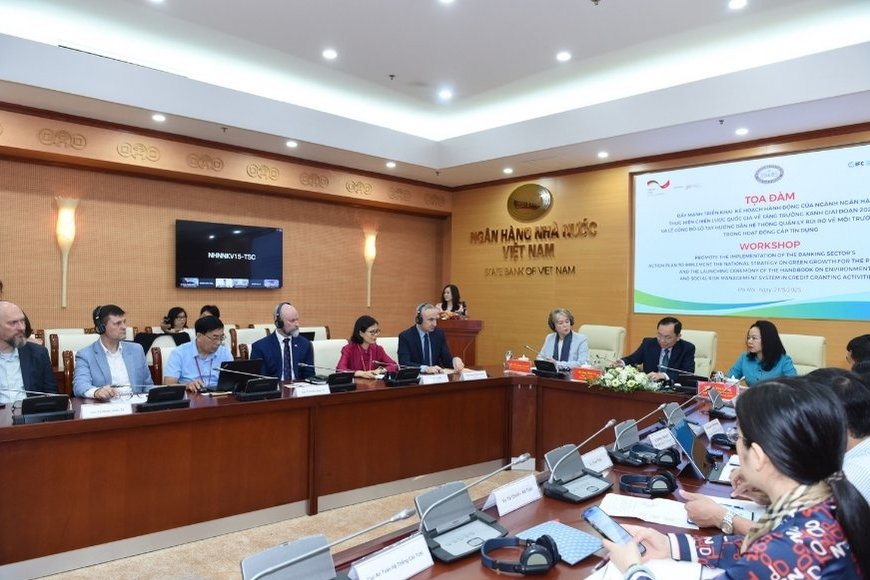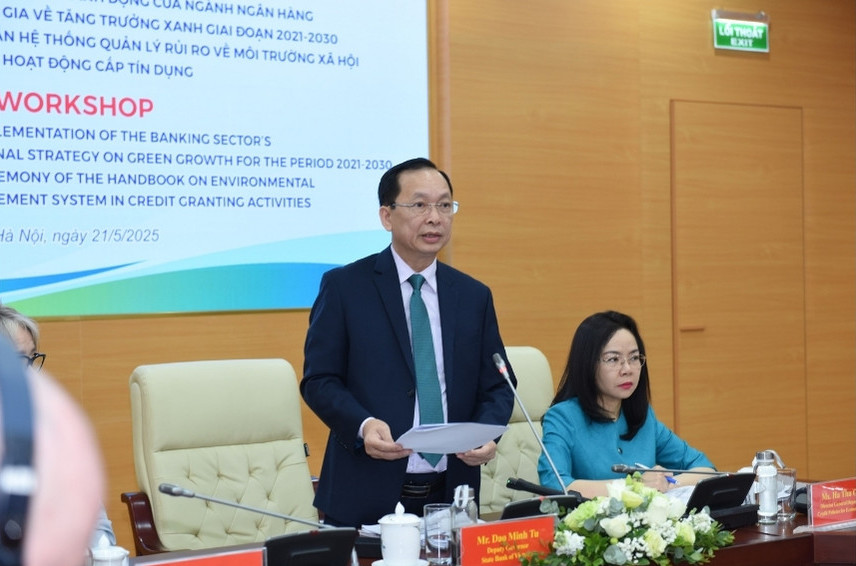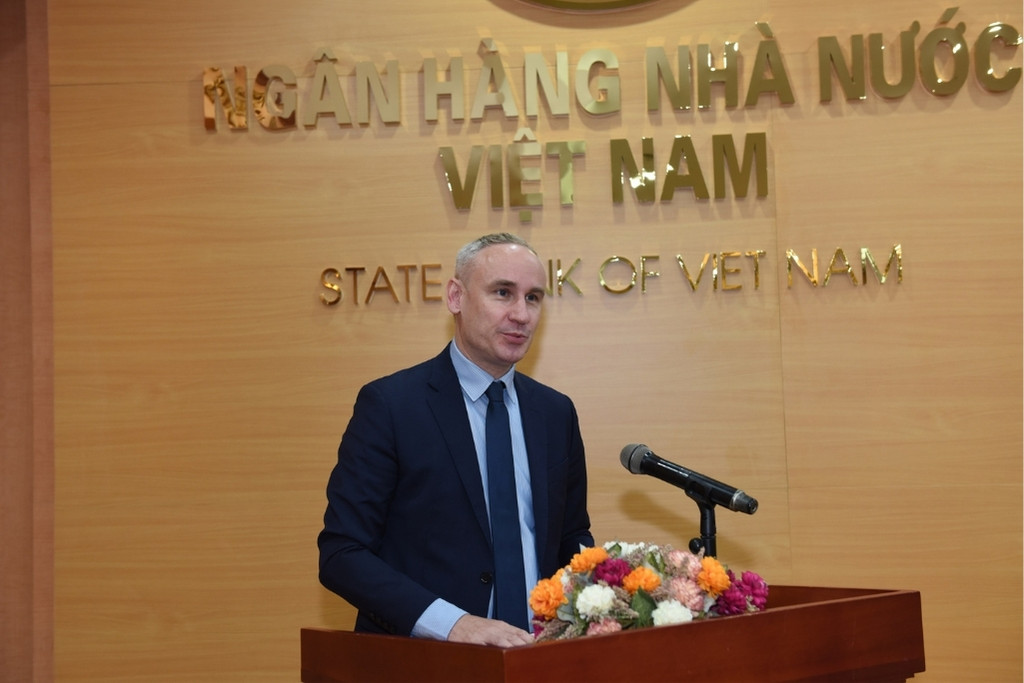On May 21, 2025, the State Bank of Vietnam (SBV) in collaboration with the German International Cooperation Organization (GIZ) and the International Financial Organization (IFC) organized a high-level seminar with the theme "Promoting the implementation of the action plan of the Banking industry to implement the national strategy on green growth in the period of 2021-2030", and at the same time announced the guidance on the environmental risk management system (ESMS).

The event took place in a face-to-face combination online with the participation of Permanent Deputy Governor of the SBV Dao Minh Tu and representatives of ministries, branches, and international organizations such as GIZ, Swiss Embassies, IFC and domestic credit institutions (CIs).
Speaking at the seminar, the Standing Deputy Governor of the State Bank affirmed: Green growth is no longer an option but has become a mandatory requirement, especially for developing countries like Vietnam. Converting the green economic model is the shortest way to a sustainable and prosperous future".

Green credit accelerates strongly
According to the SBV, the green credit balance of the whole system until March 31, 2025 reached more than 704,244 billion dong, an increase of 3.57% compared to the end of 2024, accounting for 4.3% of the total outstanding loans of the economy. The average green credit growth rate in the period of 2017-2024 reached 21.2%/year, far exceeding the general credit growth. The capital mainly poured into areas such as renewable energy, clean energy (accounting for 37%) and green agriculture (over 29%).
Along with that, the assessment of environmental and social risks in credit granting has also made great strides. By the end of the first quarter of 2025, 57 credit institutions had implemented assessments, with total outstanding loans reviewed reaching VND 3.62 million billion, nearly 1.3 million loans, an increase of more than 15 times compared to 2017.
An important highlight of the seminar was the launching ceremony of the Handbook for guiding the environmental - social risk management system (ESMS). This is a cooperation product between the State Bank and IFC, built according to international practices to support credit institutions in applying ESG standards in credit activities, promoting sustainable financial goals.
Strong message of cooperation from the international community
Representative of the German Government, Dr. Michaela Baur - Country Director of GIZ in Vietnam emphasized that 2025 is the 50th anniversary of the establishment of diplomatic relations between Vietnam and Germany. This is a pivotal year in the Green Growth Strategy. Germany is committed to continuing to accompany Vietnam for a future where no one is left behind.

Through the discussion, the SBV, financial institutions and partners affirmed that they will further strengthen cooperation in promoting green and sustainable finance in the banking industry and contributing to the goal of developing a green, inclusive and sustainable economy in Vietnam.
On the side of the SBV, in the coming time, on the basis of closely following the goals on socio -economic development, the national strategy for green growth and the tasks assigned in the project, strategy, action plan on green growth, anti -climate change, the Prime Minister's Directive on promoting the implementation of the National Strategy on Green growth, the SBV continues to commit to implementing the activities of the bank to promote the operation of the bank to promote the target of the bank to promote the operation of the bank to promote the operation of the bank to promote the operation of the bank to promote the operation of the bank to promote the operation of the bank to promote the operation of the bank. Climate change.
First, continue to manage credit growth reasonably, direct credit to production and business sectors, priority sectors, economic growth drivers according to the Government's policy (including traditional drivers and new drivers), support the economy to achieve a growth rate of 8% or more.
Second, continue to review and improve the legal framework and guidelines on green credit, including proposing amendments and supplements to mechanisms and preferential credit policies to encourage the development of high-tech agriculture, organic agriculture, and agriculture according to the circular economic model; direct credit institutions to focus capital sources, creating conditions for businesses, especially private enterprises, to implement green, environmentally friendly projects and the circular economic model.
Third, actively connect and work with domestic and foreign organizations to receive financial support, technical assistance to implement green finance and green banking activities, especially improving the capacity of banking staff on green banking - credit, climate change.
Fourth, promote information and propaganda work in the banking industry to raise awareness and understanding for bank staff and customers about green growth, sustainable production and consumption.











